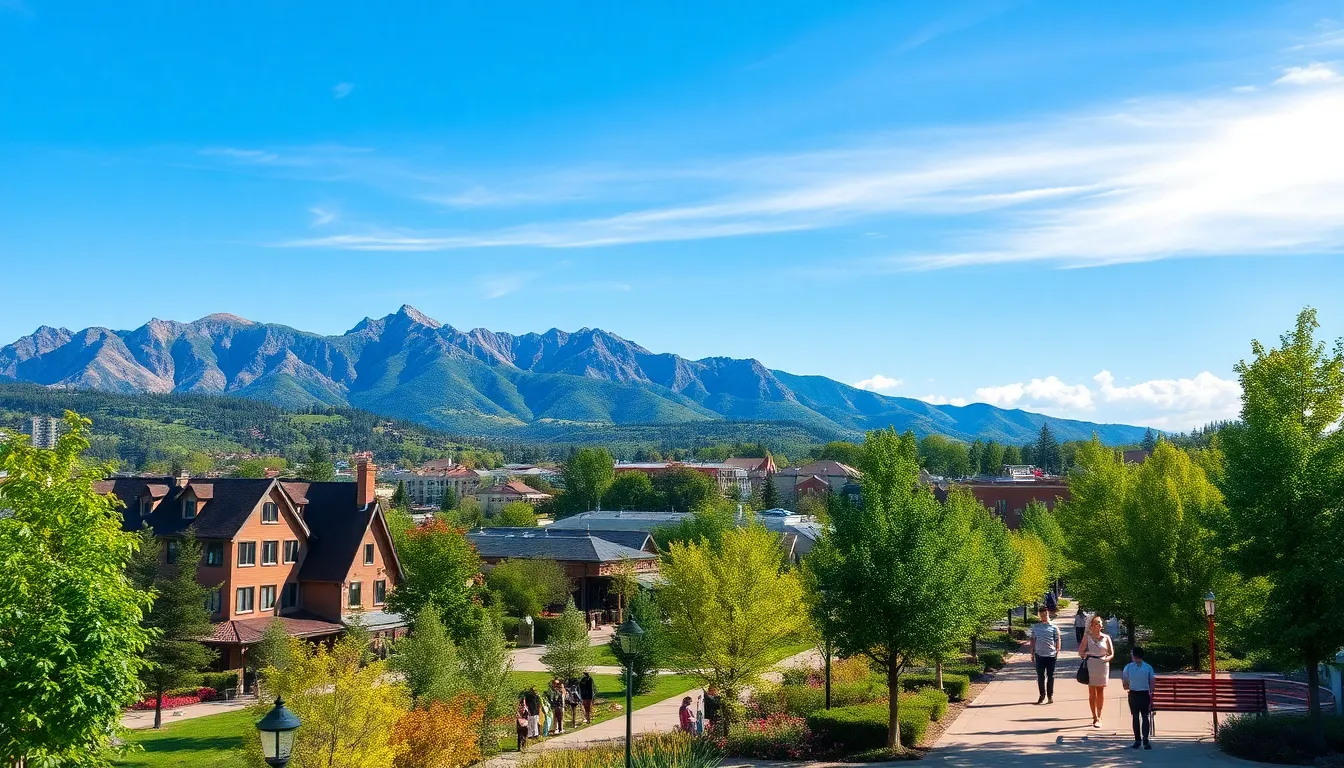Table of Contents
ToggleFinding the perfect place to call home can feel like searching for a needle in a haystack—if the haystack were filled with overpriced coffee and endless traffic jams. Luckily, U.S. News & World Report has done the heavy lifting, ranking the best places to live across the country. Whether it’s vibrant city life or tranquil suburbs you crave, their annual list is like a treasure map for the modern-day adventurer.
Overview of US News and World Report Best Places to Live
U.S. News & World Report ranks the best places to live in the United States based on various factors. These rankings assess affordability, job market strength, quality of life, and community resources. Cities and towns with vibrant cultures, excellent schools, and low crime rates often make the list.
Each year, U.S. News analyzes data from several credible sources to create its rankings. This process includes metrics like median home prices, income levels, and employment rates. Cities that score high on these criteria present appealing options for individuals and families.
In 2023, cities such as Boulder, Colorado, and Austin, Texas topped the list. Each offers unique amenities, such as outdoor recreation, thriving economies, and diverse communities. Rankings change yearly based on shifting demographics and economic conditions.
Families often prioritize factors like safety and education when considering relocation. Retirees might value access to healthcare and recreational opportunities. Each demographic group looks for different qualities in potential new homes.
Access to amenities plays a crucial role in the desirability of a location. Public parks, shopping centers, and cultural institutions contribute to a region’s livability. Areas with efficient public transportation networks and lower commute times also receive favorable rankings.
U.S. News & World Report’s annual list serves as a guide for individuals and families navigating their living options. Readers find the rankings insightful when researching prospective moves. The resource empowers them to identify communities that align with their lifestyle needs.
Top Cities Ranked


U.S. News & World Report evaluates various cities to determine the best living conditions across the nation, taking into account numerous criteria.
Factors Influencing Rankings
Affordability significantly impacts the rankings. Median home prices play a crucial role in assessing housing costs. Job market strength receives attention, reflecting the number of employment opportunities available. Quality of life contributes to the overall desirability of a location, encompassing health, safety, and leisure activities. Community resources enhance living experience, including schools and parks. Each year, U.S. News analyzes data from credible sources, ensuring a comprehensive evaluation based on these key factors.
Highlights of Top Cities
Boulder, Colorado, stands out for its natural beauty and outdoor activities, making it appealing to nature enthusiasts. Austin, Texas, offers a vibrant cultural scene and a booming job market, attracting young professionals. Raleigh, North Carolina, excels in affordability and quality education, drawing families seeking a nurturing environment. The community-focused amenities in these cities enhance both daily life and leisure, appealing to diverse preferences. Through annual rankings, U.S. News provides insights into thriving urban and suburban options, guiding individuals and families as they explore potential new homes.
Regional Insights
U.S. News & World Report provides valuable insights into the best places to live across different regions. Each area has unique characteristics, making it essential to consider varying factors.
Best Places in the Northeast
Boston, Massachusetts ranks high for its rich history and educational institutions, attracting professionals and families alike. Philadelphia, Pennsylvania offers a blend of culture and affordability, appealing to diverse lifestyles. While Washington, D.C. stands out with its robust job market and vibrant cultural scene, these cities illustrate the Northeast’s wide-ranging opportunities and amenities.
Best Places in the South
Austin, Texas is celebrated for its dynamic tech scene and thriving music culture, drawing young professionals and creatives. Charlotte, North Carolina combines a strong economy with family-friendly qualities, making it popular among relocating families. Atlanta, Georgia impresses with its cultural diversity and job prospects, showcasing the South’s overall appeal across different demographics.
Best Places in the Midwest
Raleigh, North Carolina is noted for affordable living and access to quality education, attracting families and young professionals. Minneapolis, Minnesota offers a strong job market and vibrant arts scene, appealing to those who value culture. Chicago, Illinois remains a major metropolitan hub, providing extensive career opportunities and unique neighborhoods that cater to various preferences.
Best Places in the West
Boulder, Colorado excels in outdoor activities and natural beauty, attracting nature enthusiasts and health-conscious individuals. Seattle, Washington features a booming tech industry and stunning waterfront views, making it desirable for those seeking innovation. San Francisco, California remains a cultural leader with diverse communities and job markets, exemplifying the West’s vibrant living options.
Lifestyle Considerations
Lifestyle considerations significantly impact the choice of where to live. Factors such as cost of living, job opportunities, and education systems play crucial roles in shaping the quality of life in various cities.
Cost of Living
Cost of living varies widely across the U.S. Boulder, Colorado, for example, exhibits higher housing prices than cities like Raleigh, North Carolina. Affordability remains a primary concern for families relocating. Median home prices and local expenses influence overall living conditions. Relocation to cities with reasonable costs not only eases financial burdens but also enhances lifestyle flexibility. Areas with lower costs often provide better amenities, making daily life more enjoyable, especially for those on fixed budgets.
Job Opportunities
Job opportunities differ from city to city and affect migration patterns significantly. Austin, Texas, stands out for its robust job market, especially in technology and innovation sectors. Employment rates in cities like Raleigh and Minneapolis soar due to diverse industries. Those seeking job security should consider cities with strong economic growth. Quality of life improves in cities where job opportunities align with residents’ skills and aspirations. High levels of employment attract both new graduates and seasoned professionals, contributing to vibrant local economies.
Education Systems
Education systems greatly impact families when choosing where to live. Raleigh, North Carolina, gains acclaim for its quality education options and strong public school performance. Communities with top-rated schools tend to attract families seeking the best for their children. Accessibility to higher education institutions also enhances a city’s desirability. Areas that prioritize educational growth often correlate with improved overall quality of life, giving residents a solid foundation for future success. Investment in education reflects a city’s commitment to fostering talent and innovation, boosting morale within communities.





